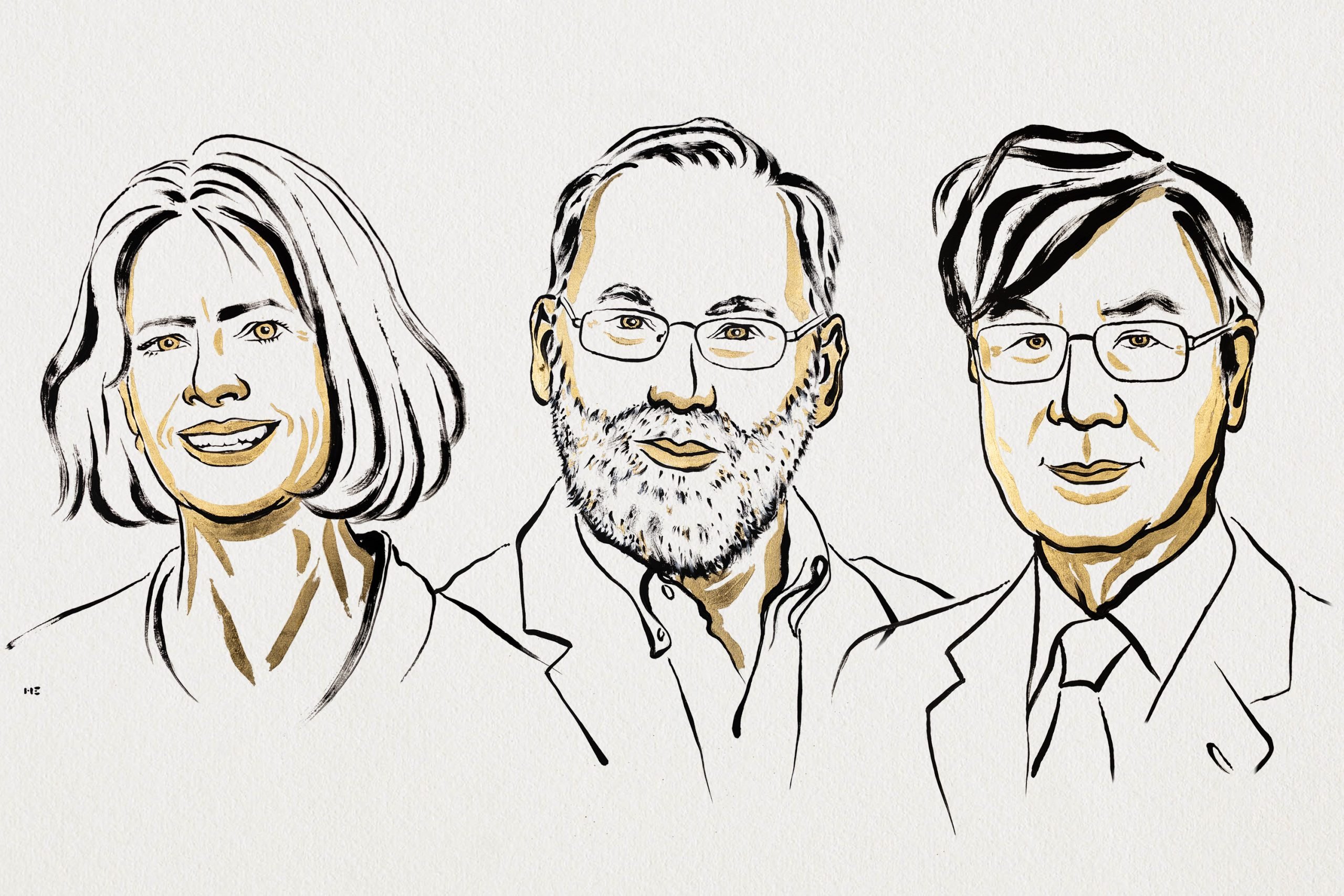Nobel Prize in Physiology or Medicine awarded to three scientists for their immune research
The scientists’ identification of regulatory T cells furthered understanding of the immune system
Sarah Hofmann • October 6, 2025

Mary Brunkow, Fred Ramsdell and Shimon Sakaguchi, winners of the 2025 Nobel Prize in Physiology or Medicine. [Credit: Niklas Elmehed | © The Nobel Committee for Physiology or Medicine]
Mary Brunkow, Fred Ramsdell and Shimon Sakaguchi have won the 2025 Nobel Prize in Physiology or Medicine for research that discovered the mechanism that keeps the immune system from attacking the body, launching the field of peripheral tolerance.
“Their discoveries have been decisive for our understanding of how the immune system functions and why we do not all develop serious autoimmune diseases,” Olle Kämpe, chair of the Nobel Committee, said in the committee’s press release.
Sakaguchi, currently a professor at the Immunology Frontier Research Center at Osaka University in Japan, said during a Monday press conference that many illnesses need further research and treatment, and that he hopes further progress will lead to their prevention.
“I believe the time will come when cancer is no longer a scary disease, but a curable one,” he said in response to a question from Japanese Prime Minister Shigeru Ishiba, whose call interrupted that press conference.
Kämpe said that Americans Brunkow and Ramsdell didn’t answer his early-morning phone call. Brunkow, who currently serves as senior program manager at the Institute for Systems Biology, learned of the win after her dog barked at an Associated Press photographer on her front porch. Ramsdell, now an adviser at Sonoma Biotherapeutics, had not been reached by midmorning.
Two key discoveries from the awardees helped lay the foundation for research into treatments for immune diseases. By the 1990s, the press release said, the scientific community knew that our immune systems use T cells, a type of white blood cell, to identify and fight harmful microbes; but it wasn’t clear what mechanism kept T cells from attacking the body.
After years of research into immune regulation, Sakaguchi identified the specific T cells that could regulate immune responses. In a 1995 study, mice who lacked their own T cells but were injected with CD4+CD25+ T cells remained healthy, while the mice injected with other T cells developed autoimmune diseases.
However, scientists still couldn’t explain immune tolerance in a broad sense, according to the scientific background provided by the Nobel Committee.
Meanwhile, Brunkow and Ramsdell, who then worked at biotech company Celltech Chiroscience in Bothell, Washington, began researching scurfy mice, which carry a genetic mutation that causes fatal autoimmune disease in some males.
They began mapping the middle of the mouse’s X chromosome, one of the two chromosomes that determine an animal’s sex. With 1990s technology, looking for one mutated gene was “like looking for a needle in a gigantic haystack,” the Nobel Committee’s popular science explainer said. Brunkow and Ramsdell found that needle after identifying 20 possible genes and finding the mutation in the last of the 20, which they named Foxp3.
In 2001, the two researchers showed that mutations in FOXP3, the human equivalent of the scurfy mouse’s mutated gene, were responsible for an autoimmune disease called IPEX syndrome, which is characterized by the development of multiple autoimmune disorders, most often affecting the intestines, skin, and endocrine glands.
Soon after, Sakaguchi’s team proved the FOXP3 gene controls the development of regulatory T cells, which prevent other T cells from attacking the body.
“The laureates’ discoveries launched the field of peripheral tolerance, spurring the development of medical treatments for cancer and autoimmune diseases,” the press release said.
There are currently over 200 clinical trials involving regulatory T cells, Kämpe said during the press conference.
“There’s early stages, and it takes a long while to develop new therapeutics,” Nobel Committee member Rickard Sandberg said in a press conference interview, but, “we have a new handle on how to attack these problems.”